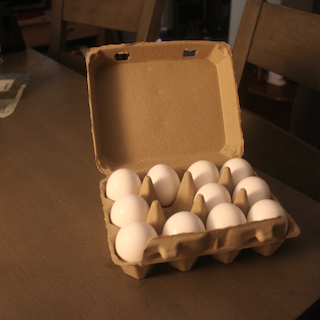The Bantam’s Gift — a Glimpse of Wonder entry™ — The Waiting Curve - Series 11 of 12
 Not every chicken is built the same. Some are made for laying — dependable, almost mechanical in their rhythm. A Rhode Island Red or a White Leghorn can fill a carton with eggs faster than you can make an omelet. But ask them to brood? To sit faithfully and bring those eggs to life? Forget it. They’ll wander off the nest, distracted, bored, moving on before the work is done.
Not every chicken is built the same. Some are made for laying — dependable, almost mechanical in their rhythm. A Rhode Island Red or a White Leghorn can fill a carton with eggs faster than you can make an omelet. But ask them to brood? To sit faithfully and bring those eggs to life? Forget it. They’ll wander off the nest, distracted, bored, moving on before the work is done.
Then there’s the bantam hen. She doesn’t lay many eggs, and what she does lay are smaller. But give her a clutch and she’ll sit on them like the world depends on it. Day after day, she keeps them warm, turning them gently, guarding them with a fierceness far bigger than her size. Ask any farmer — bantams are some of the best brooders you can find.
It makes you think: what kind of “chicken” are we?
Some of us may have gifts that look impressive — large, abundant, quick to show results. Others may feel their contribution is smaller, less noticeable, not as dazzling. But gifts without faithfulness can be fragile. And faithfulness, even in small things, can bring life. Didn’t Jesus praise the widow who gave two small coins — not for the size of her gift, but for the heart behind it? (Luke 21:1-4, NWT).
Jehovah doesn’t ask us all to be the same. He values variety. Paul once compared the congregation to a body — not every part is an eye, or a hand, or a foot, but each has its place, and each matters (1 Corinthians 12:14-20). Maybe you’re not the Rhode Island Red of the group, churning out baskets of visible results. Maybe you’re the bantam, steady and devoted in your corner. But what you do matters. Your gift — your presence, your loyalty, your quiet acts of care — may be what keeps others warm enough to grow.
So, what kind of chicken are you? The one admired for its output but quick to wander off? Or the one who, though small, stays faithful on the nest until the work is finished?
Jehovah isn’t looking at the size of your egg. He’s looking at the faithfulness of your brooding.
References
-
Ekarius, C. 2007. Storey’s Illustrated Guide to Poultry Breeds
-
Hutt, F.B. 1949. *Genetics of the Fowl
Edited by dljbsp
- Mike047, Dolce vita and Roxessence
-
 1
1
-
 1
1
-
 1
1

1 Comment
Recommended Comments
Join the conversation with your brothers and sisters!
You are posting as a guest. If you are already a member, sign in now to post with your existing account.
Note: Your post will require moderator approval before it will be visible.